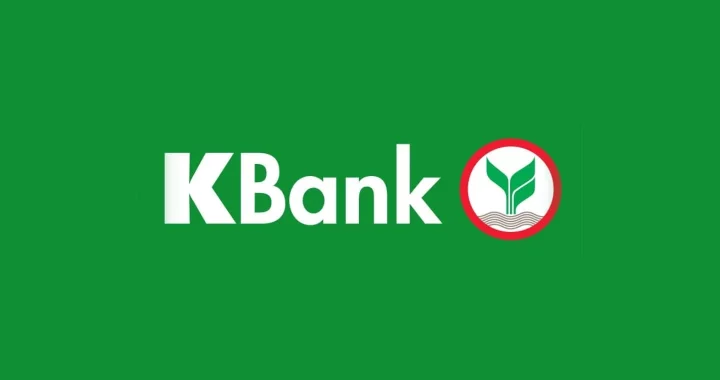SCB CIO suggests five investment tactics to dominate in bull and bear markets

Despite deteriorating market conditions, SCB CIO has revealed investment strategies for generating profits in both bull and bear markets: 1) Investment in long-term sovereign bonds and investment-grade fixed income to generate cash flow; 2) Diversifying risks to new products; 3) Investing in structured notes to generate cash flow; 4) Opting for long-term thematic investment; and 5) Utilizing assets to generate returns through Wealth Lending Products. SCBS expects the SET index to reach 1,650 points this year, and recommends BBL, BJC, CPF, CBG, and MTC for their potential gains and the advantages they will enjoy as a result of the country’s reopening. Meanwhile, Bank Julius Baer recommends keeping 20 percent of private equity in a portfolio as a hedge against market volatility and a source of potential long-term rewards.

Siam Commercial Bank Chief Investment Office and Product Function Executive Vice President Sornchai Suneta recently spoke at a seminar for SCB PRIVATE BANKING customers titled “Defining News Opportunities: Investment Outlook 2022,” where he revealed that in the United States (US), declining energy and food prices, as well as falling home prices due to the doubling of loan interest rates from their original 30-year rate of around 3% p.a. to an average of 6% p.a., are all indicators that US inflation may have slowed down in July. Similar to the trend in home prices, rents are expected to decrease. Meanwhile, the hourly cost of labor has already begun to fall. Due to the strengthening dollar and decreasing shipment times, the cost of importing goods into the US has gone down significantly. Inflation may fall as a result of this pattern because it suggests that prices across the board will fall. It is anticipated that the Federal Reserve (Fed) will raise interest rates by 0.50 percentage points at their upcoming September meeting, followed by two additional rate hikes of 0.25 percentage points each. The [US?] economy has shown signs of slowing, so interest rate hikes may end next year.
Oil is another factor to keep an eye on. Despite the fact that oil prices will decrease in the short-term, the remaining production reserve capacity of OPEC nations is progressively declining. Even if the price increases, they are unable to significantly increase production capacity since investments in new oil drilling have continuously dropped as the importance of fossil fuels continues to decline. As a result, this constraint prevents energy costs from being significantly reduced. OPEC members may produce less than their quota this year due to a lack of supplies. Given that the recent drop in oil prices may be temporary and not the beginning of a new, lower trend, the capacity issues facing the industry are cause for concern.
European countries are experiencing a moderate energy crisis and their inflation rates have not yet passed their peak due to their reliance on natural gas imports primarily from Russia. While importing natural gas from the US could solve this issue, transportation costs are rather significant in comparison to imports from Russia. The GDP of European nations may enter a recession sooner than that of other nations.
Thailand’s inflation rate has not yet reached its high. A probability greater than 7 percent exists due to price increases of numerous products. This will have an impact on the consumer price index. The public sector is still in a fragile position, with pay minus inflation resulting in a negative cost of living. As a result, the Monetary Policy Committee (MPC) may not hike interest rates significantly, because doing so would cause widespread financial hardship for families. As the baht depreciation did not result in significant capital outflows, it is unnecessary to hike interest rates as aggressively as the US. However, it is anticipated that the MPC will likely hike interest rates by 0.25 percentage points at its August meeting, and will raise interest rates more three times this year and twice next year.
Sornchai Suneta noted that investors should focus on the following five investment strategies to generate profits in both bull and bear markets amid a volatile environment:
Generate cash flow from investment portfolios by investing in long-term government bonds and investment-grade fixed income. A potential slowdown or recession in the economy means that interest rates are unlikely to rise much more. Investing in REITs to earn dividends is also attractive because the hotel industry has been increasingly active as visitors have resumed traveling and room rates are beginning to revert to pre-pandemic norms.
Diversify risks by investing in new alternative products uncorrelated to market conditions, such as private equity, private debts, and private real estate. This long-term investment in non-listed companies is less volatile than publicly listed companies and will lower portfolio volatility.
Invest in structured notes that can generate cash flow. For example, by mixing debt securities with futures to create derivatives. Unlike conventional products, innovative structures like Sharkfin and Inverse can guarantee both a high rate of return and the safety of your principle. KIKO (Knock-In Knock-Out) is a type of investment that does not guarantee repayment of principal but offers a high rate of return in the form of regular cash flow.
Long-term thematic investment is an investment strategy that disregards short-term volatility in order to seek opportunities to invest in businesses with strong growth potential in the future, such as healthcare, e-commerce, and green energy in the EV segment.
Take advantage of existing assets to create returns via Wealth Lending Products in the category of property backed loans or Lombard loans which use debentures or vacant real estate as collateral for special interest rate loans to invest in a variety of assets. Under the guidance of the Bank’s investment advisory teams, investors can find solutions that fit their objectives in terms of risk tolerance and inflation protection. The annual rate of return for medium-risk investments ranges between 7 and 8 percent.
SCB Securities Co., Ltd. Research Chief Research Office Sukit Udomsirikul revealed that even though the rest of the world is concerned about the current economic downturn, Thailand is currently not at risk of experiencing a downturn. However, the economy is not significantly superior to that of other nations. Based on GDP estimates for this year, Thailand is projected to be in a relatively optimistic group, with a GDP of approximately 2-3 percent. The International Monetary Fund IMF recently predicted 2.8 percent GDP growth for Thailand, whereas most local institutions expect growth of 3 percent or higher. For this reason, Thailand is relatively safe. The economy and stock market provide independent aspects. When times are tough, the conventional wisdom among investors is that it is best to stay out of the market. In reality, now is a suitable time to invest because the stock market drives economic growth. SCBS estimates that the SET index will end the year at approximately 1,650 points. The third quarter could see the lowest point for stock markets around the world, including Thailand.
Now is the right timing for investment as there are several solid, reasonably priced stock options available. Investors should look for stocks that are showing signs of recovery, since they offer the greatest number of investing opportunities. SCBS picks five outstanding companies, namely BBL, BJC, CPF, CBG, and MTC. Retailer BJC (BigC) stands to gain from the reopening of the country’s economy. Food company CPF will profit from cheaper raw materials. With cities now open for business again and the price of packaging raw materials decreasing, CBG energy drinks are entering a period of business recovery. However, the stock price may fluctuate due to the company’s sales generated by exporting to CLMV nations, which account for around 30% of revenues. Due to a shortage of dollars, some countries may avoid trading their currency for dollars, which may have an effect on its earnings. We consider right now to be a compelling time to buy CBG stocks. The beverage industry as a whole is forecast to grow even further next year. The combined effects of higher interest rates and worries about bad loans led to a precipitous decrease in MTC’s share price, but MTC’s stock price should benefit from a recovering economy and stable interest rates.
Despite the downturn, the outlook for the Thai stock market is not as pessimistic as compared to the US or Asian stock markets. The Thai stock market is outperforming other markets because of the substantial number of companies in the energy, banking, and commercial sectors linked to the country’s reopening. These shares are favorable for the stock market because of their robust performance and fundamentals, in contrast to those of the economic sector that focus on consumption and export, and do not represent the majority of shares on the stock market. Investing in the stock market is analyzed from business perspectives, while the economy will be analyzed from the country’s overall picture. This is why the Thai stock market has not plummeted as dramatically as other markets.
Gains this year were seen mostly in the medical, tourism, and transportation sectors, while other sectors saw a moderate loss. The average loss for Thai stocks is less than 10 percent, with just a handful of sectors seeing losses greater than 10 percent. This indicates that the Thai stock market declined less, compared to the loss of more than 20 percent suffered in other markets. However, the energy, food, banking, and insurance industries—all of which have a bearing on inflation—should be the primary focus of investors. In the event that interest rates go up, these equities will perform well.
Bank Julius Baer Head of Funds Specialist Asia Donald Rice noted that global financial markets were extremely turbulent. The Russian-Ukrainian crisis, volatility from inflation, economic uncertainty, and subsequent interest rate hikes have all contributed to negative treasury yields and stock market sentiments. Because of these considerations, conventional assets are extremely unstable. Private equity investments are becoming increasingly attractive as a means for institutional investors (such as funds, conservative organizations, and wealth management firms catering to high-net-worth individuals) to cushion themselves from the effects of market volatility. An investor may allocate between 5 and 10 percent of their portfolio to private equity investments, with the option to allocate as much as 20 percent.
A portfolio should include private equity to diversify risks beyond traditional assets and gain access to companies with solid fundamentals that are not publicly traded. Currently, companies listed on the stock exchange in the US are decreasing due to the existence of many regulations, while the number of private corporations continues to rise. As a result, investing in these firms which are currently experiencing a time of rapid expansion has the potential to provide big profits.
” These companies will be able to grow rapidly and sustainably based on over two decades of professional experience working in private equity and leveraging our skills to help them expand financially and strategically through private equity financing,” Rice noted.
Investing in private equity entails a number of risks, including: 1) Market volatility, although to a lesser extent than investing in traditional assets; 2) Investment regulations that differ from those governing traditional assets; and 3) Unpredictable returns because investors may have to put their money into early-stage companies. Investors will see returns after they begin to generate income; 4) Investment information is not provided routinely and will not be as constant as when investing in listed stocks; and 5) This investment has a long-time horizon with low liquidity.






































